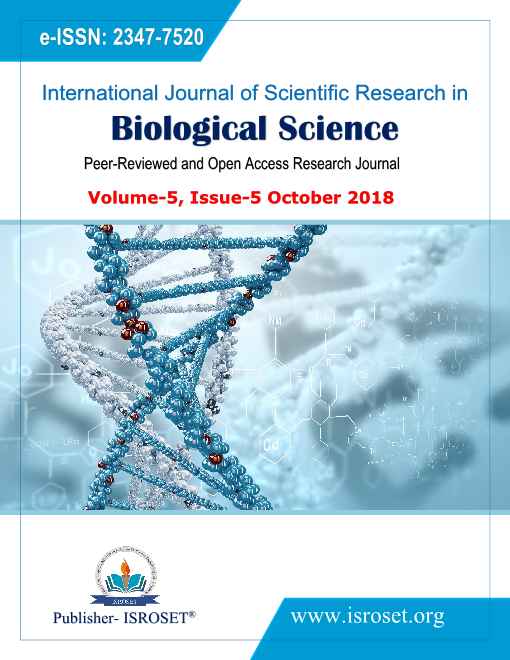Faunal Monitoring of Ahmedabad Airport as a Part of Bird-Aircraft Strike Hazard (BASH) Study
Keywords:
Birds, Bird Aircraft Strike Hazard (BASH), Black kite, Insects, Sardar Vallabhbhai Patel (SVP) International AirportAbstract
Ahmedabad’s Sardar Vallabhbhai Patel International (SVPI) airport is known to have a high potential of bird-aircraft collision hazards. For determining the causes and magnitude of the problem and to find out likely solutions, birds, other small animals (mammals and reptiles) and insects were monitored by Gujarat Ecological Education and Research (GEER) Foundation, Gandhinagar during pre-monsoon and monsoon seasons between 2015 and 2017. For monitoring birds, two linear transects were laid, one each along each side of the runway. Besides transect-based bird surveys, bird species were also randomly recorded in other parts of the airport premises and even outside it (within 1 km belt parallel to the airport boundary). A total of 59 species of birds were encountered within the airport premises that belonged to 30 different families. Of these, 48 species were recorded along the transects. The majority (i.e., 83%) of the total 59 species were either obligate or facultative insectivorous birds. As the majority of birds were found to be obligatorily or facultatively insectivorous, insect monitoring was also carried out. For recording insects(species/genera and their numbers), Visual Encounter Survey (VES) was carried out in the operational area. A total of 80 species of insects were encountered which belonged to 42 families and 11 orders. Some measures that were suggested by GEER Foundation for reducing the chances of bird-aircraft collision included regulating the growth of grasses through regular grass-cutting preferably before sunrise or after sunset, controlling population of rodents and termites, considering to facilitate artificial grasses/tuft cover. By roping in GEER Foundation for faunal monitoring seasonally SVPI airport authorities have provided an example of ecological concerns in airport management. Other airports in the country should follow this example.
References
L. A. Dale, “Personal and corporate liability in the aftermath of bird strikes: A costly consideration”. Human-Wildlife Conflicts, 3 (2), 216–225, 2009.
R. A. Dolbeer, and S. E. Wright, “Safety management systems: how useful will the FAA national wildlife strike database be?” Human–wildlife conflicts 3 pp. 167–178, 2009.
Maragakis, “Bird population trends and their impact on aviation safety 1999-2008”. Safety report European aviation safety agency, safety analysis and research department, pp. 1-20, 2009.
U. C. Bernice., and J. K. Floyd, “An Avian/Airport Study for Standiford Airport, Louisville, Kentucky Results And Management Implications” In: 5 - Fifth Eastern Wildlife Damage Control Conference. pp 1-12, 1991.
R. E. Harris, & R. A. Davis, “Evaluation of the efficacy of products and techniques for Airport Bird Control”. LGL Report TA2193. LGL Limited, Environmental Research Associates. 1998.
G.R., Davidson, Jr., T.V. Degeare, Jr., T.J. Sorg, and R.M. Clark. “Land disposal near airports reporting bird/aircraft hazards” U.S. Environmental Protection Agency. Open-file Report (TSR 1.1.004/0) 1971.
B. J. Pathak, K. Tatu, V. Vyas, and K. Mokaria, “A Study on Birds at Ahmedabad Air-port (SVPI Airport) & its Environs to Minimize Bird-strike Hazards to Aircrafts [with Emphasis on Problems from Black Kite (Milvus migrans)]”, Report no. 68/2013, Gujarat Ecological Education and Research (GEER) Foundation, Indroda Nature Park, Gandhinagar, Gujarat Technical Report, pp. 1-86, 2012.
D. Borer, N. Johnson, and C. Triplehorn “Borror and DeLong's An introduction to the study of insects”, Saunders collage publication, Ohio State University, OH, USA No. Ed. 6, pp 1-875, 1989.
P. S., Corbet, “Dragonflies: Behaviour and Ecology of Odonata” Comstock Publishing Associates, Ithaca, New York, pp. 1-830, 1999.
A.D. Imms, O.W. Richards, R. G. Davies, (Eds.) Imms’ “General Textbook of Entomology Volume 2: Classification and Biology, Springer, Dordrecht, ISBN 978-94-011-6516-7, Volume 2 pp. 1-1279, 1977.
K. A. Subramanian, Dragonflies and Damselflies of Peninsular India-A Field Guide. E-Book of Project Lifescape. Centre for Ecological Sciences, Indian Institute of Science and Indian Academy of Sciences, Bangalore, India. pp. 1-118. 2005.
S. Ali, and S. D. Ripley, “Handbook of the Birds of India and Pakistan”. (Vol.1-10). Oxford University Press, New Delhi, 2002.
J. L. Capinera, “Relationships between insect pests and weeds: an evolutionary perspective”. Weed Science 53, pp. 892-901, 2005.
Downloads
Published
How to Cite
Issue
Section
License

This work is licensed under a Creative Commons Attribution 4.0 International License.
Authors contributing to this journal agree to publish their articles under the Creative Commons Attribution 4.0 International License, allowing third parties to share their work (copy, distribute, transmit) and to adapt it, under the condition that the authors are given credit and that in the event of reuse or distribution, the terms of this license are made clear.







